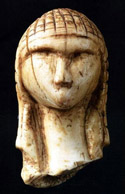Anthropology, Department of

Department of Anthropology: Faculty Publications
Document Type
Article
Date of this Version
2007
Citation
Heitman, Carrie C. 2007. “Houses Great and Small: Re-evaluating the Construction of Hierarchy in Chaco Canyon, NM, A.D. 850-1180.” In The Durable House: Architecture, Ancestors and Origins, edited by Robin A. Beck, Jr., pp. 248-272. Occasional Paper No. 35, Center for Archaeological Investigations, Southern Illinois University, Carbondale, IL.
Abstract
In recent years, a growing number of archaeologists have explored the potential of expanding Lévi-Strauss’ concept of house societies to better understand specific archaeological contexts. Looking specifically at the classificatory distinction between “great houses” and “small houses” within Chaco Canyon (A.D. 850–1180), I suggest this theoretical model might yield new insights with regard to four symbolic dimensions of house construction: the use of wood, directional offerings, resurfacing practices, and the bones of ancestors. Using Puebloan ethnographic literature and cross-cultural comparisons, I suggest a house model analysis may serve to integrate anomalous “ceremonial” dimensions of house construction in an effort to better understand how these structures shaped and wholly reflected changing patterns of social organization through directional associations, differential access to origins, and cyclical processes of ritual renewal.


Comments
Copyright © 2007 by the Board of Trustees, Southern Illinois University